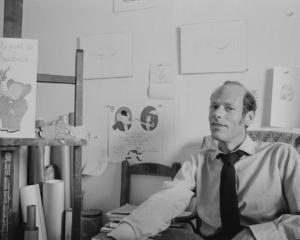
Jessie Neilson reviews The White Road by Edmund de Waal. Publisher: Penguin Random House
"Go from the purest white in Dresden to the creamiest white in Stoke-on-Trent. Follow a line. Follow an idea. Follow a story. Follow a rhythm.''
Renowned potter Edmund de Waal, author of The Hare with Amber Eyes, is obsessed. This time, rather than trace part of his family history through its collection of netsuke, Japanese carved toggles, it is the circularity, the ''white, returning to white'' of porcelain which consumes him.
Porcelain for him is synonymous with far away. Initially, he plans to venture to the sacred three white hills in China, Germany and England, but this he extends to four.
With a child often in tow de Waal sights the Fonthill Vase, and a tumbling landscape of shards at Mount Kao-Ling, China. There is much to discover: of the pottery Mao badges produced by mass child labour, and the porcelain factory which operated within Dachau concentration camp.
Of China he has dreamt of the deep porcelain basins to hold carp in palace complexes; stem cups for rituals; and platters for the banquets of Timurind princes. He tells of Nanjing's famed porcelain pagoda, now destroyed; of King Augustus who suffered from Porzellankrankheit, a sickness for porcelain; and the purported inventor of European porcelain, Tschirnhaus.
He is as obsessed with the historical figures as with the porcelain itself, and his stories pour outwards, as he creates imaginary dialogues with and motivations for these likewise passionate individuals, picturing himself strolling alongside.
De Waal is deeply philosophical in combining historical and contemporary accounts, and fascinated by the notions of alchemy and transformation. He interweaves an extraordinary range of practical and historical knowledge in this personal journeying through the shards, the successes and the failures of porcelain creation.
Yet despite appreciating his style, and admiring the sensitivity and detail of his writing, it is a challenge to stay focused. An ideal reader would need to be similarly fixated on the history and practice of porcelain creation for this to be all-absorbing.
Jessie Neilson is a University of Otago library assistant.











